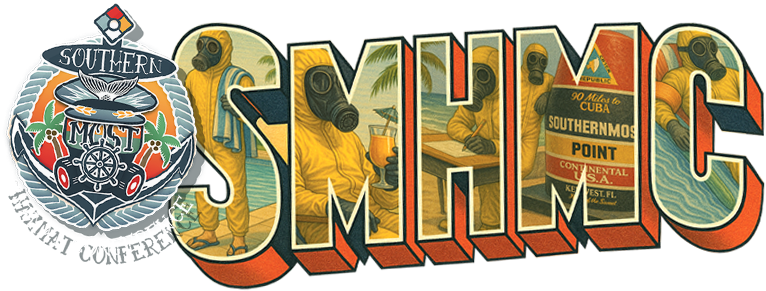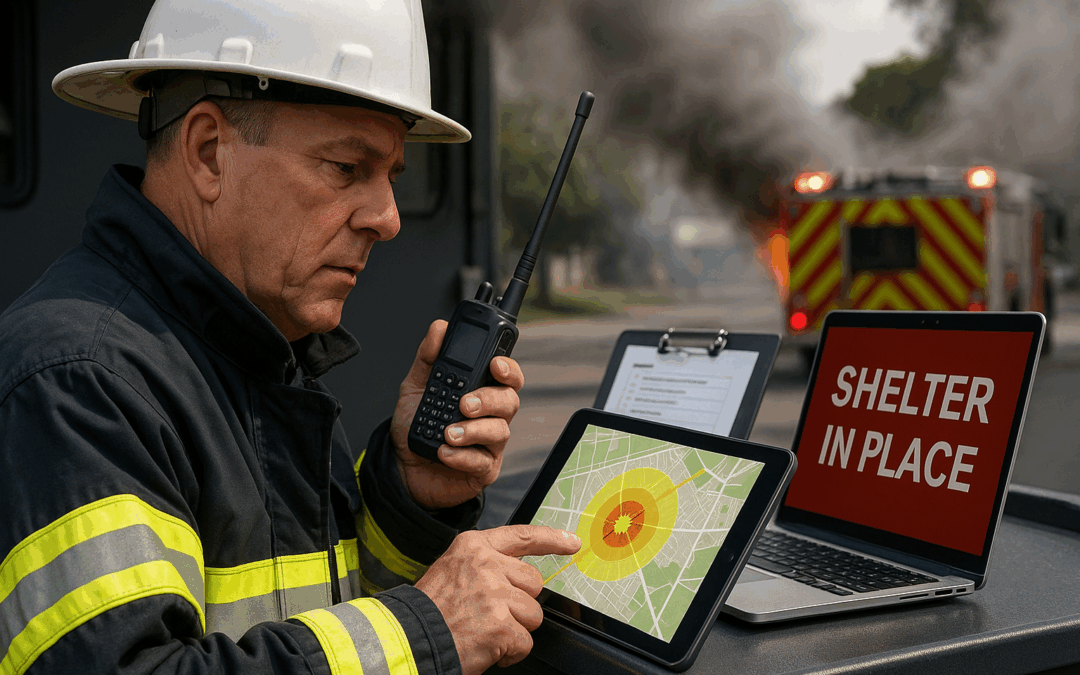Commanding Chaos: What Hazmat Incident Commanders Really Need to Know
A Real Conversation About a Job Nobody Wants to Think About
When I sat down with Bobby Salvesen and Mike Monaco – aka The Haz Mat Guys – I didn’t expect a gut-check on how unprepared many of us really are when it comes to the command side of hazmat response.
Most responders know how to suit up, plug a leak, or meter a scene. But incident commanders? That’s a different kind of pressure.
Mike put it plainly: “There’s a million documents out there. How are you supposed to be well-versed in all of them?”
That’s the uncomfortable truth. You’re not. Not without a plan. And not without the right tools and training in place before things go sideways.
This episode focused on radiological events – specifically, what happens when a radiological dispersion device (RDD) goes off and you’re the highest-ranking person on scene.
And yes, that can mean you – the volunteer chief, the battalion officer in a small department, or even the acting lieutenant holding the clipboard until someone with brass shows up.
Mapping Fallout with Cell Phones: No More Excuses
The third phase of the federal response document outlines the first big job of incident command: create a geospatial incident map.
This means plotting the explosion and the first two radiation readings in GIS software. That might sound like you need high-end tech or a specialist sitting in a trailer somewhere – but you don’t.
As Bobby pointed out, every rig has an iPad or a phone now. “Just install the software. You don’t need a stockpile of GPS units anymore.”
The tool of choice? FEMA’s RadResponder, now rolled into ChemResponder. It’s free. It’s powerful. And yes, it’s being monitored in real-time by federal agencies.
“You type in 45 REM in your backyard, someone from a three-letter agency is going to call you in five minutes,” Bobby warned with a laugh, but he’s not joking.
This app is serious business. It’s a real-world tool that incident commanders can’t afford to ignore.
And here’s the kicker: if your members have phones (which they do), they can run this software. You just need to tell them to.
Why 15 Minutes Can Make or Break the Public’s Trust
Once you’ve got your initial readings plotted, the next step in phase four is public messaging. And it needs to happen fast, the document recommends within 15 minutes of the incident.
This is where many incident commanders fall short.
Bobby gave it to me straight: “If you don’t give people information consistently, they’ll get squirrely. And they’ll make your problems worse.”
People panic when they’re left in the dark. They evacuate when they should stay put. They film and post chaos online while responders are still en route.
But if you have pre-written, pre-approved public alerts – short, clear messages you can push through your county’s alert system and it’s a game-changer.
Here’s an example Bobby shared:
“An explosion has occurred at [location]. Emergency personnel are on scene. If you are nearby, move inside, close windows and doors, and stay put until further notice.”
Simple. Authoritative. And absolutely critical.
To send it, you’ll probably go through your local Office of Emergency Management (OEM), but do you know who to call?
If not, you need to find out. Today.
Shelter-in-Place Zones: You Need a Plan Before the Sirens
Along with messaging comes the decision: shelter-in-place or evacuate?
According to the federal guidance, it’s up to local command to define the boundary. That’s a huge responsibility, and you better not be making it up as you go.
Plume modeling can help, using tools like ALOHA or ChemResponder’s built-in features. But even those need trained operators and real-time weather data.
“It’s going to be a case-by-case call,” Bobby explained. “Explosion size, wind, weather – all of it matters.”
But here’s the hard truth: if you haven’t thought about your evacuation boundaries or pre-written your alert messages before the event, you’re going to lose time and possibly lives.
Checklists Are a Sign of Strength, Not Weakness
One of the most powerful things that came out of this conversation was a simple idea: good incident commanders use checklists.
Planes crash. Cranes fall. Railcars derail. You won’t remember everything in the heat of the moment, and you shouldn’t have to.
“You’d be a fool not to have a binder with checklists for those edge-case incidents,” Bobby said.
And don’t worry, they’re already written. You can Google them. Adapt them. Store them in a folder on your phone.
Having a checklist doesn’t mean you’re unprepared, it means you’ve prepared so well that your brain doesn’t have to run a marathon while everyone is screaming.
The Myth of “Too Busy to Train”
The biggest trap commanders fall into is thinking they don’t have time for this kind of prep.
That’s backwards. You don’t have time not to.
You can hold a drill with your crew next week. Install ChemResponder. Assign someone to test plume modeling. Build a folder of public alerts and print it out. Boom – you’re ahead of 80% of departments.
As Mike put it: “This job’s only overwhelming if you wait to get overwhelmed.”
Final Thoughts: Don’t Wait Until You’re in the Seat
This episode wasn’t flashy. There were no war stories or big rescues. But what we covered may be one of the most important things we’ve talked about yet.
Being an incident commander isn’t about standing at a podium with a radio, it’s about making decisions with incomplete information, under pressure, with people’s lives on the line.
If you’re reading this and you wear a white helmet, or even a black one with a bugle on it, ask yourself:
- Do I have a plan for public messaging?
- Do I know how to use ChemResponder?
- Are my checklists ready?
- Does my crew know how to support me?
If you answered no to any of those, don’t feel bad. Just fix it now. Because once the siren goes off, it’s already too late.



Konular mükemmel olduğu gibi site teması da içeriğe müthiş uyum sağlamış. Tebrikler
The info regarding RadResponder and ChemResponder is very inaccurate as it is now, and has been for awhile, CBRNresponder (https://www.cbrnresponder.net/) which requires users to obtain an account which must be verified and not everyone can just signup and get access. THG might want to verify important information like this before making it public, gives ya’ll a black eye.
Hey Greg,
Thanks for reaching out. Glad you had time to check out the article. You brought up some good points. Rad Responder and Chem Responder were combined into CBR&E Responder just a few months back, on June 18, 2025.
The article is based on our episode from January 20, 2023, called The First 100 Minutes (THMG375). I looked, and there’s nothing in there saying anyone can just sign up and get access. The closest thing is, “if your members have phones, which they do, they can run the software. You just need to tell them to.” We do mention in the episode that you need to use your work email, even if it’s not spelled out in the article.
I get where you’re coming from about keeping info current. But honestly, it’s tough to update an article every time a button or feature changes in an app we talked about almost three years ago.